In Photos: New Seamount Discovered Beneath Pacific Ocean
Kilo Moana
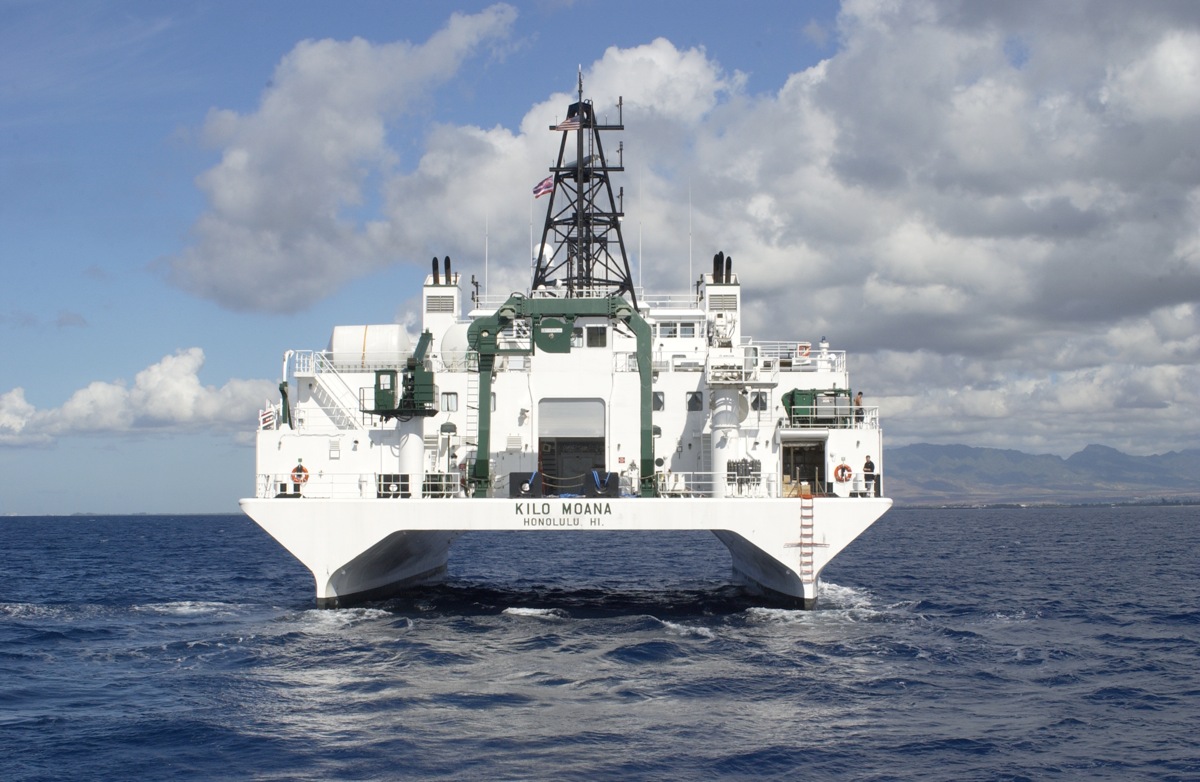
On Aug. 13, 2014, University of New Hampshire scientists aboard the research vessel Kilo Moana (shown here) discovered a new seamount on the bottom of the Pacific Ocean. The ship, a small water area twin hull owned by the U.S. Navy and operated by the University of Hawaii, was tasked with mapping the seafloor beginning on Aug. 8. [Read full story]
Pacific Seamount
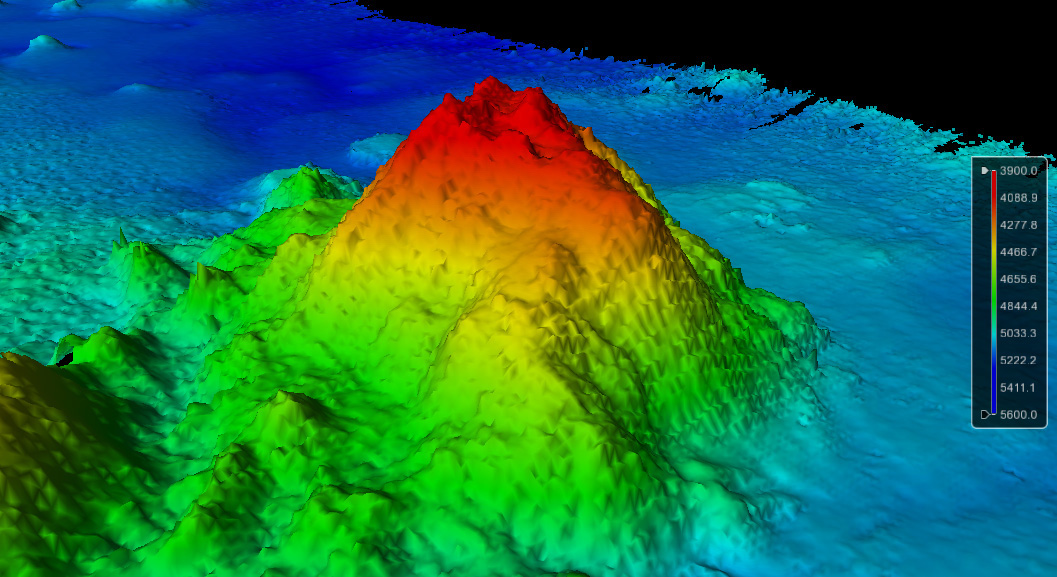
The newly discovered seamount rises up some 3,600 feet (1,100 meters) from the seafloor near the Johnston Atoll, at a depth of about 16,730 feet (5,100 m). When an underground structure reaches about 1,000 m, scientists generally consider it a seamount. Shown here, a 3D view of the southwest side of the seamount with 23-degree slopes. [Read full story]
Hidden Mountain
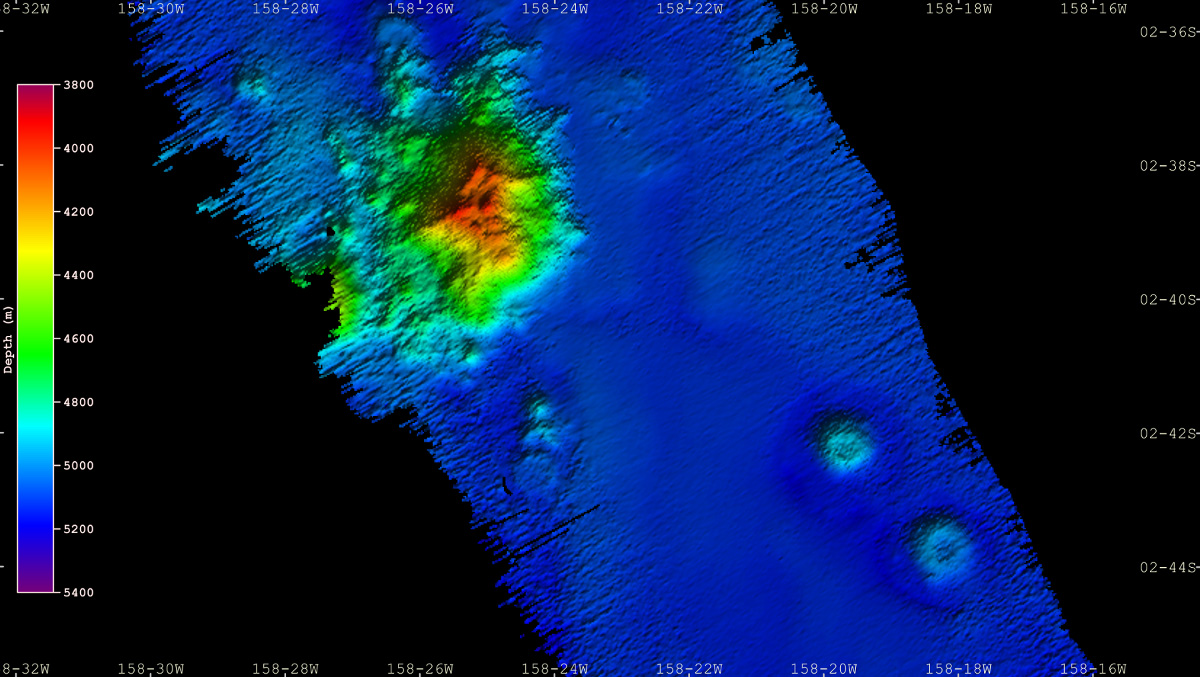
The seamount, which has yet to be named, is located about 186 miles (300 kilometers) southeast of Jarvis Island. It has a conical shape with a base stretching some 4.3 miles (7 km) and a maximum slope estimated at 23 degrees. Shown here, a plain view of a CUBE 40-meter resolution grid of the seafloor area surrounding the newfound seamount. [Read full story]
Seamount and volcanoes
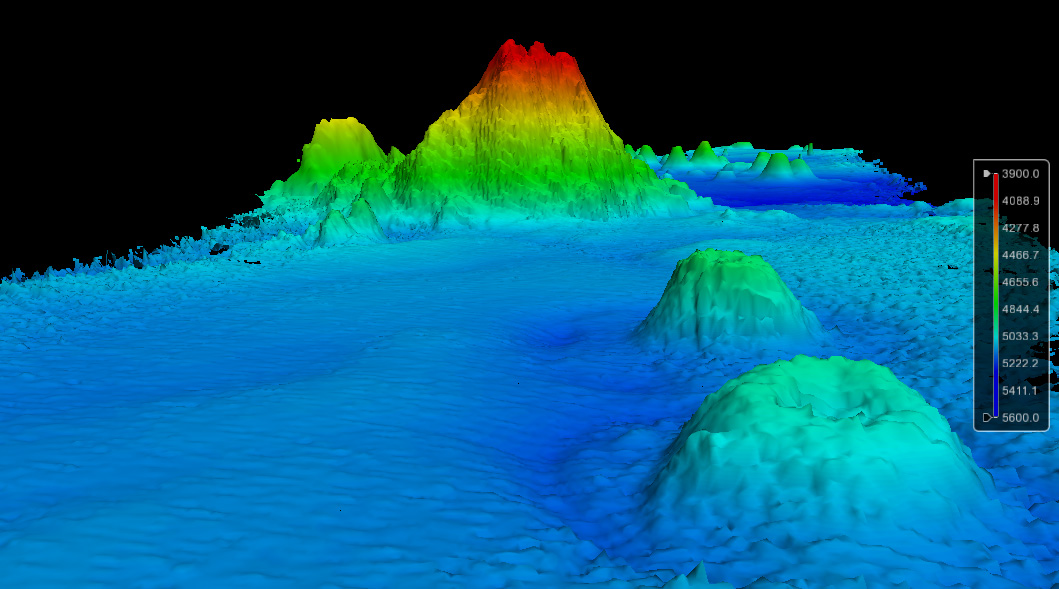
Here, a 3D view of the seamount area (southeast point of view and 3.5 times vertical exaggeration) showing two volcanoes, in the foreground, with the newly discovered seamount in the background.
The newly discovered seamount lurks in one of the least explores areas of the central Pacific Ocean. Typically, just low-resolution satellite data that wouldn't pick up a seamount of this size are available for most of the planet's seafloor. The researchers used multibeam echosounder technology to find the seamount. [Read full story]
Hidden Feature
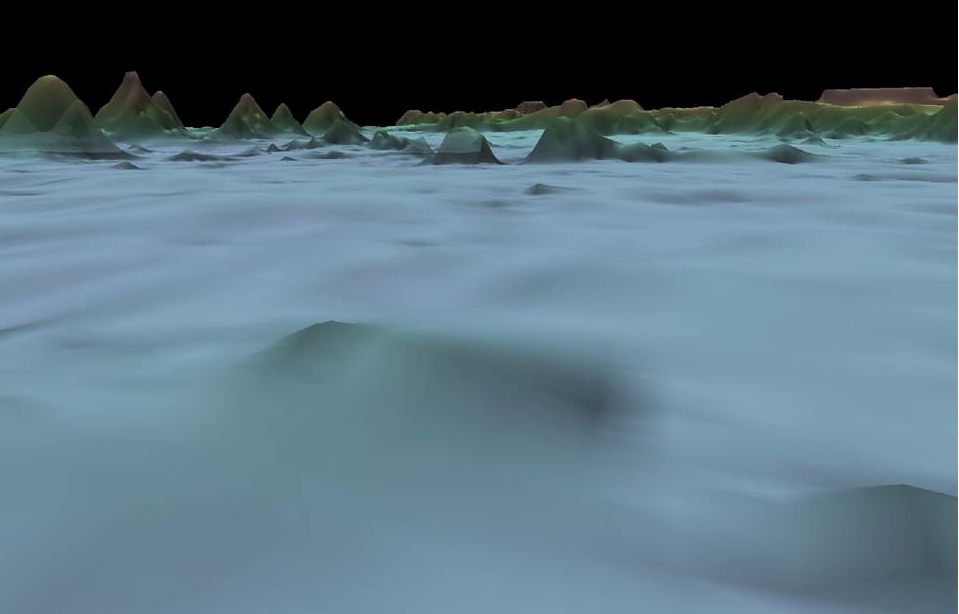
Here, the best available bathymetry (1,850 meters per pixel) of the region where the seamount was discovered, and it barely shows any hint of a feature. The vertical exaggeration is 5x so that the details of the seamount show up. [Read full story]
Coming into View
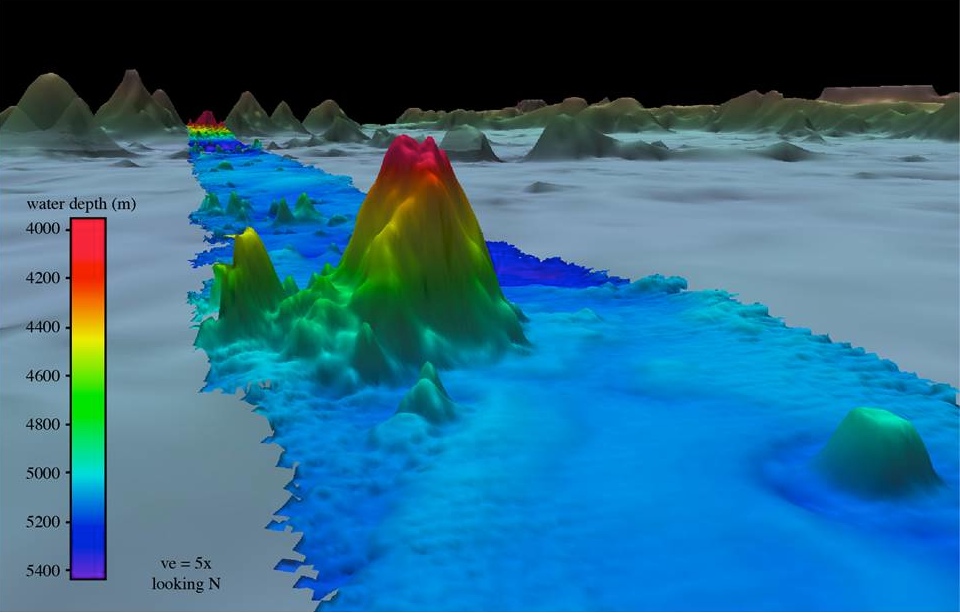
The researchers discovered the seamount (or extinct underwater volcano) using a 12-kHz multi-beam echosounder, which uses sonar, or sound waves, to detect contours on the ocean floor. Late one night, the seamount appeared "out of the blue," Gardner said in a statement. [Read full story]
Johnston Atoll
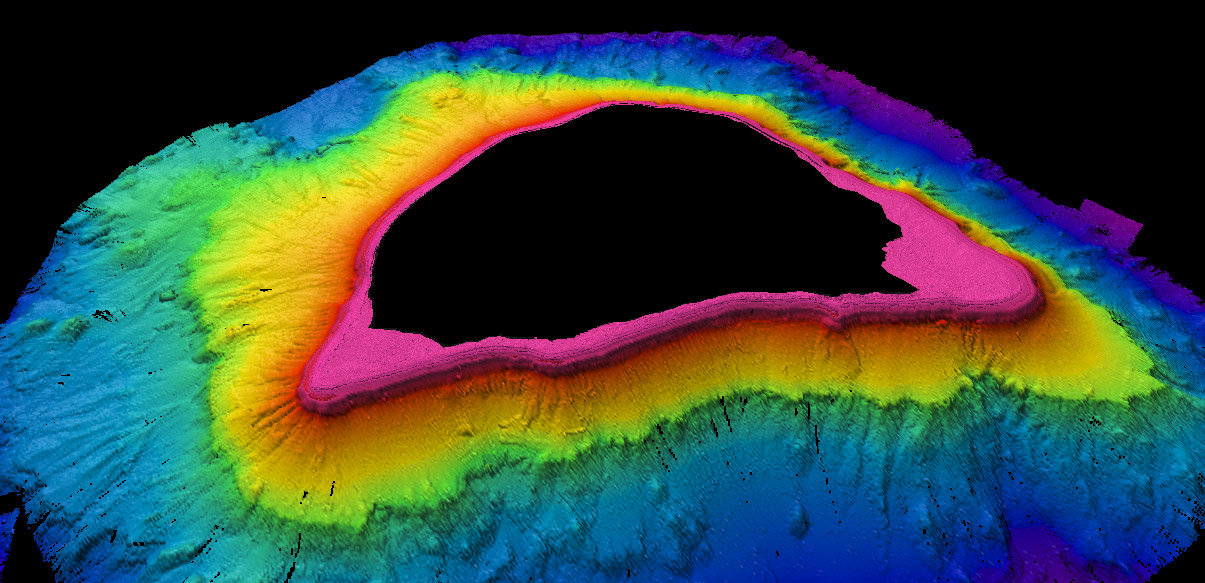
The seamount is located near the Johnston Atoll, shown here in a 3D image of multibeam bathymetry. The atoll, which includes four islands and a small lagoon, is a National Wildlife Refuge.
Sign up for the Live Science daily newsletter now
Get the world’s most fascinating discoveries delivered straight to your inbox.
Jarvis Island
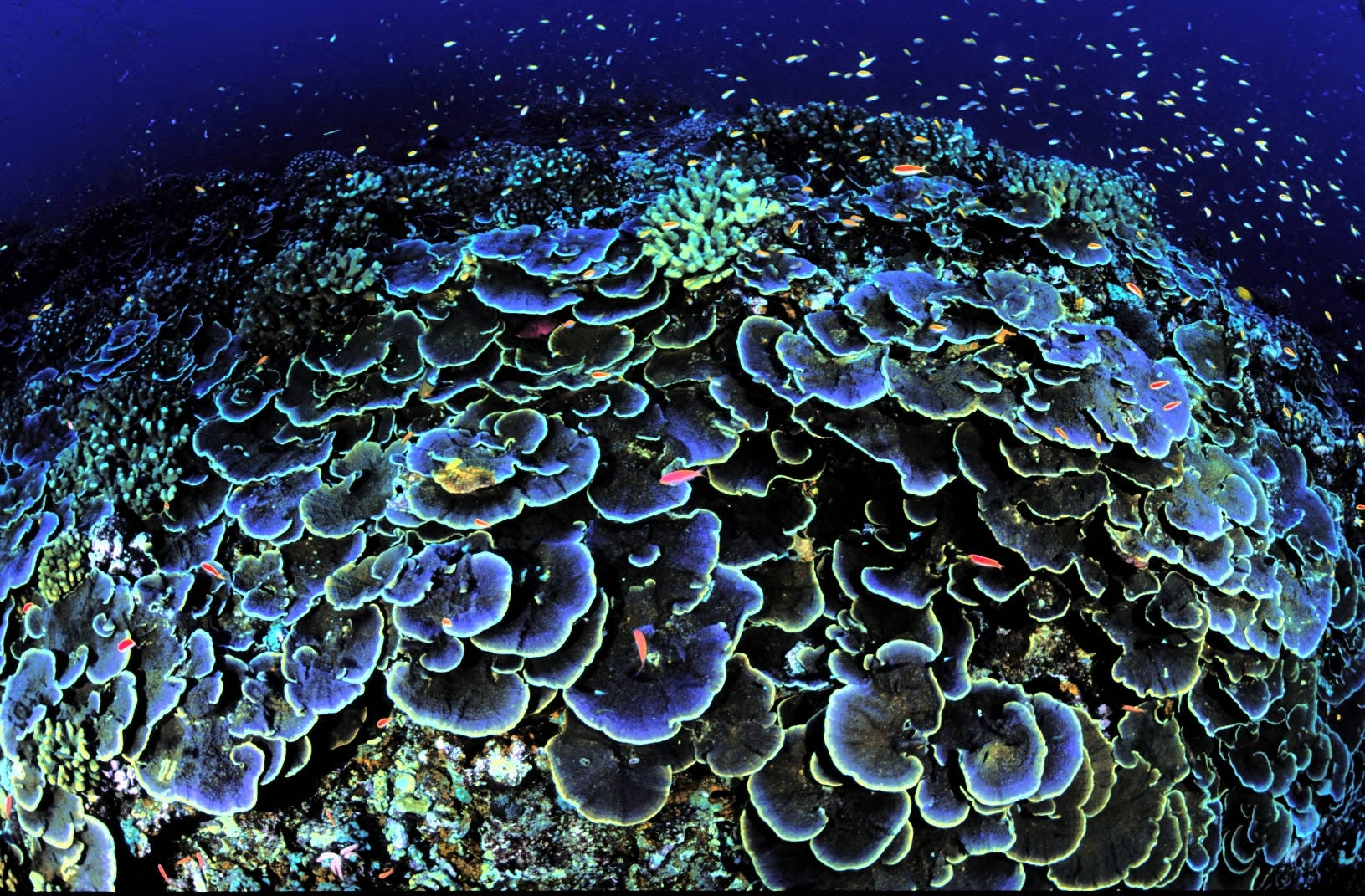
The Kilo Moana is participating in the work of the U.S. Extended Continental Shelf Task Force, whose goal is to determine the outer limits of the U.S. continental shelf, mapping an area of the Pacific Ocean that is one of the least explored of the Earth's oceans. Here, coral around Jarvis Island, which is located 186 miles (300 kilometers) from the newly discovered seamount.
Jeanna Bryner is managing editor of Scientific American. Previously she was editor in chief of Live Science and, prior to that, an editor at Scholastic's Science World magazine. Bryner has an English degree from Salisbury University, a master's degree in biogeochemistry and environmental sciences from the University of Maryland and a graduate science journalism degree from New York University. She has worked as a biologist in Florida, where she monitored wetlands and did field surveys for endangered species, including the gorgeous Florida Scrub Jay. She also received an ocean sciences journalism fellowship from the Woods Hole Oceanographic Institution. She is a firm believer that science is for everyone and that just about everything can be viewed through the lens of science.










